overview effect
description: experience of seeing the reality and fragility of the Earth in space
25 results
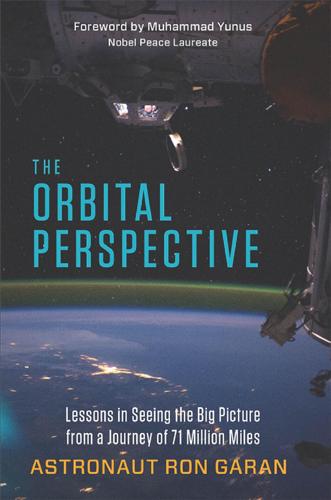
The Orbital Perspective: Lessons in Seeing the Big Picture From a Journey of 71 Million Miles
by
Astronaut Ron Garan
and
Muhammad Yunus
Published 2 Feb 2015
Perhaps the most comprehensive is Frank White’s book The Overview Effect, which was first published in 1987.1 In the first edition, Frank interviewed sixteen astronauts about their experiences in space, and he coined the term “overview effect” and developed it into a theory to describe the perspective shift that some of these space travelers experienced. If the overview effect is a change in perception that one gets from physically seeing Earth from space and in space, then the orbital perspective derives from that experience and drives what we do with it. The orbital perspective is the call to action that results from the overview effect. The key for me is that the orbital perspective involves taking action.
…
See also Call to action Dan Irwin and, 128, 129, 133 defined, xi, xii, 73 essence of, ii everyone can have an, 60–61 Fragile Oasis and, xiii need for, 150–151 need to develop an, 151 overview and nature of, 129, 167–168 overview effect and, 63 patriotism and, 125 providing everyone with opportunity to experience, 166 SERVIR and, 131, 133 temporal component, 73–74 as way to erase obstacles, boundaries, and resistance to any problem, ix worm’s eye view and, 70–75, 98, 125, 128, 157, 167 Orbital perspective approach, tearing down barriers to taking an, 151 Organizational structure, 118–119 Overview effect, 63, 64, 68 Overview Effect: Space Exploration and Human Evolution, The (White), 63 Patriotism, 125 Perspective, 1. See also Orbital perspective definitions, 1 a shifting, 3–7 two- vs. three-dimensional, 1–2 Pineapple Project, 136–138 Piñera , 106–107 Polk, James D., 105, 107, photo Polyakov, Valeri, 18 Poverty, 81–82.
…
The lighting, colors, and the motion of the scene were constantly changing. And when my brain was able to extrapolate the curvature of Earth, I was filled with the certainty that I was witnessing a planet hanging in the blackness of space. Earth became my ever-present travel companion. This is the overview effect, which makes possible the orbital perspective. Elevated Empathy In addition to the overview effect, however, there is another element to the orbital perspective, which I call elevated empathy. This T h e O r bi ta l P e r sp e c t i v eâ•… 65 concept really became concrete to me one night in July 2011, four months into my five-and-a-half-month mission on board the ISS.
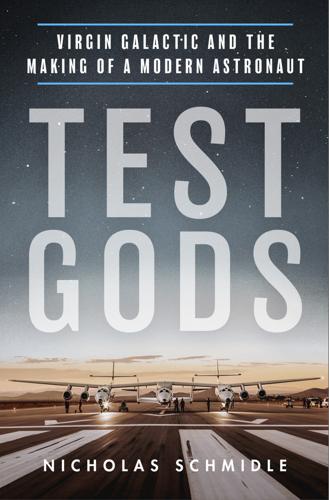
Test Gods: Virgin Galactic and the Making of a Modern Astronaut
by
Nicholas Schmidle
Published 3 May 2021
later threatened to bill him … listening to opera on his headphones: Todd Venezia, “NASA to Space Tourist: You Owe Us,” New York Post, May 6, 2001. “I just came back from paradise”: Marcus Warren, “Trip Was Out of This World, Says First Space Tourist,” Telegraph (UK), May 7, 2001. “the overview effect”: Frank White, The Overview Effect: Space Exploration and Human Evolution (Boston: Houghton Mifflin, 1987). “feeling of unity”: David Bryce Yaden et al., “The Overview Effect: Awe and Self-Transcendent Experience in Space Flight,” Psychology of Consciousness: Theory, Research, and Practice 3, no. 1 (March 2016): 1–11. “very, very emotional”: Terry Gross interview with Alan Shepard, NPR, July 15, 1994.
…
When Tito flew to Houston to train with his two Russian companions, NASA officials barred him from entering the facility and later threatened to bill him for disrupting space station operations—though, truthfully, Tito was less disruptive and more meditative, gazing during his trip at the spectacular views out the window and listening to opera on his headphones. He said, upon landing, “I just came back from paradise.” Astronauts had a name for this sensation, the profundity of staring at Earth from space. They called it “the overview effect.” One described it as a “feeling of unity.” Another said, “You don’t see the barriers of color and religion and politics that divide this world.” Alan Shepard, the first American in space, said, “It was just very, very emotional.” He was moved to tears. In 1990, when a NASA craft captured an image of the Earth from four billion miles away, framing the planet as a speck awash in cosmic surf, a mere “pale blue dot,” the astrophysicist and novelist Carl Sagan said, “That’s here.
…
Stucky got the craft under control and looked out his window. The Earth’s bright-blue surface filled his porthole. It was a stupendous sight: the outer edge of the atmosphere was dancing with wispy tendrils. The altimeter showed 84,000 feet—higher than Stucky had ever been—and he could now testify to the awesome power of the “overview effect.” But then he realized that he wasn’t supposed to be looking down at Earth—that this was the plan for tourist flights, but for this test the ship was meant to stay upright. He was momentarily confused: he should have been seeing only the blackness of space; somehow he had flipped and inverted without noticing.
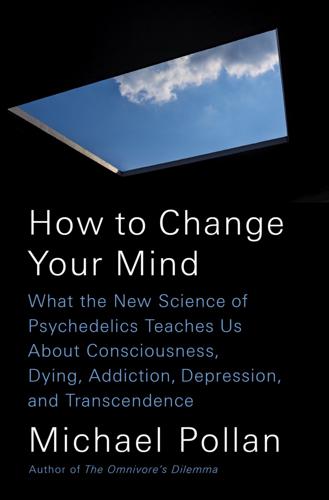
How to Change Your Mind: What the New Science of Psychedelics Teaches Us About Consciousness, Dying, Addiction, Depression, and Transcendence
by
Michael Pollan
Published 30 Apr 2018
.”* It was the power of this novel perspective—the same perspective that Stewart Brand, after his 1966 LSD trip on a North Beach rooftop, worked so hard to disseminate to the culture—that helped to inspire the modern environmental movement as well as the Gaia hypothesis, the idea that Earth and its atmosphere together constitute a single living organism. I thought about this so-called overview effect during my conversations with volunteers in the psilocybin trials, and especially with those who had overcome their addictions after a psychedelic journey—to inner space, if you will. Several volunteers described achieving a new distance on their own lives, a vantage from which matters that had once seemed daunting now seemed smaller and more manageable, including their addictions. It sounded as though the psychedelic experience had given many of them an overview effect on the scenes of their own lives, making possible a shift in worldview and priorities that allowed them to let go of old habits, sometimes with remarkable ease.
…
Perhaps this is one of the things psychedelics do: relax the brain’s inhibition on visualizing our thoughts, thereby rendering them more authoritative, memorable, and sticky. The overview effect reported by the astronauts didn’t add anything to our intellectual understanding of this “pale blue dot” in the vast sea of space, but seeing it made it real in a way it had never been before. Perhaps the equally vivid overview effect on the scenes of their lives that psychedelics afford some people is what makes it possible for them to change their behavior. Matt Johnson believes that psychedelics can be used to change all sorts of behaviors, not just addiction.
…
The concept of awe, I realized, could help connect several of the dots I’d been collecting in the course of my journey through the landscape of psychedelic therapy. Whether awe is a cause or an effect of the mental changes psychedelics sponsor isn’t entirely clear. But either way, awe figures in much of the phenomenology of psychedelic consciousness, including the mystical experience, the overview effect, self-transcendence, the enrichment of our inner environment, and even the generation of new meanings. As Keltner has written, the overwhelming force and the mystery of awe are such that the experience can’t readily be interpreted according to our accustomed frames of thought. By rocking those conceptual frameworks, awe has the power to change our minds.
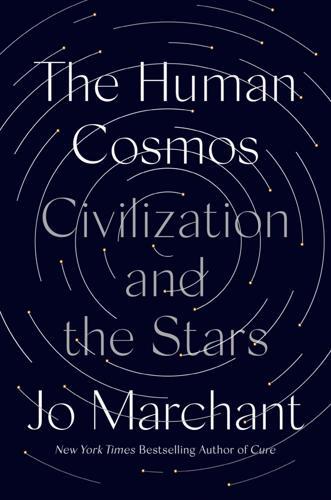
The Human Cosmos: A Secret History of the Stars
by
Jo Marchant
Published 15 Jan 2020
“From out there on the moon”: Alex Pasternak, “The Moon-walking, Alien-hunting, Psychic Astronaut Who Got Sued by NASA,” Vice, May 14, 2016, https://www.vice.com/en_us/article/aek7ez/astronaut-edgar-mitchell-outer-space-inner-space-and-aliens. “you don’t see the barriers”: Frank White, The Overview Effect: Space Exploration and Human Evolution, 3rd ed. (Reston, VA: American Institute of Aeronautics and Astronautics, 1987), 37. named in the 1980s: White, The Overview Effect. powerful example of awe: Yaden et al., “The Overview Effect,” 1–11. “inner peace”: White, The Overview Effect, 41. “state of grace”: Geoff Hoffman, iPM, BBC Radio 4, May 2013, http://www.bbc.co.uk/programmes/b01sjn9l; quoted in Nick Campion, “The Importance of Cosmology in Culture: Contexts and Consequences,” in Trends in Modern Cosmology, ed.
…
See also Ron Garan, The Orbital Perspective: Lessons in Seeing the Big Picture from a Journey of 71 Million Miles (San Francisco: Berrett-Koehler, 2015), 52–53. “compassion and concern”: David Yaden et al., “The Overview Effect: Awe and Self-transcendent Experience in Space Flight,” Psychology of Consciousness: Theory, Research, and Practice 3 (2016): 3. sold his SUVs: Ben Guarino, “The Overview Effect Will Save Earth One Rich Space Tourist at a Time,” Inverse, December 18, 2015, https://www.inverse.com/article/6301-overview-everview-effect-space-tourism-environmentalism-spacex-richard-garriot. “From out there on the moon”: Alex Pasternak, “The Moon-walking, Alien-hunting, Psychic Astronaut Who Got Sued by NASA,” Vice, May 14, 2016, https://www.vice.com/en_us/article/aek7ez/astronaut-edgar-mitchell-outer-space-inner-space-and-aliens.
…
You want to grab a politician by the scruff of the neck, drag him a quarter of a million miles out, and say, ‘Look at that, you son of a bitch.’” Looking at Earth from space, “you don’t see the barriers of color and religion and politics that divide this world,” said Apollo 17 astronaut Gene Cernan. What struck him instead was “humanity, love, feeling, and thought.” This “Overview Effect” was named in the 1980s, but has recently gained growing attention. In 2008, a group of astronauts, scientists and space experts created the Overview Institute to share astronauts’ insights more widely and “move humanity closer to world peace.” The 2012 documentary film Overview and the 2018 National Geographic channel series One Strange Rock brought the phenomenon to mass audiences, while advances in virtual reality and space tourism mean that many more people could soon experience the effect directly.
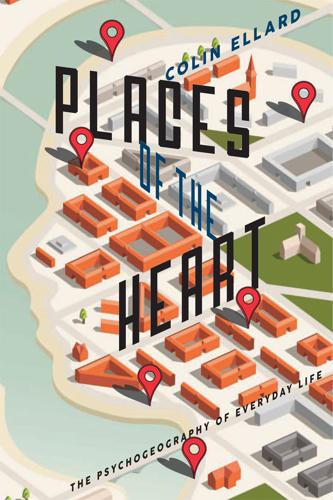
Places of the Heart: The Psychogeography of Everyday Life
by
Colin Ellard
Published 14 May 2015
Writing in the New York Times on Christmas Day of 1968, the day that the image began to circulate in earnest, the poet Archibald MacLeish captured the feelings of many by saying: “To see the Earth as it truly is, small and blue and beautiful in that eternal silence where it floats, is to see ourselves as riders on the Earth together, brothers on that bright loveliness in the eternal cold—brothers who know now they are truly brothers.”2 The feelings experienced by the three astronauts on board Apollo 8, and those enjoyed vicariously by those of us who watched in wonder from Earth’s surface, have been felt over and over again by astronauts venturing into the far reaches of space. Author Frank White dubbed the effect that I am describing as the “Overview Effect” in his 1987 book, which took the name of the effect as its title. In the short film Overview from White’s group, the Planetary Collective, philosopher and Zen teacher David Loy describes the feelings of astronauts gazing at the Earth as a realization of “their interconnectedness with that beautiful blue-green ball.”
…
We can be overcome by awe when we encounter a dramatic natural phenomenon such as an inky starlit sky, a thunderstorm, or a majestic view of a mountain range or canyon, or even by simple reflection or discussion of major world events (for example, simply hearing the radio transmissions of the conversations of lunar astronauts generated a massive, global experience of awe). More to the point in the current chapter, we can also be overcome by awe in built settings. But what, exactly, does this mean? Dry, dictionary definitions suggest that awe consists of a unique combination of surprise and fear. But the reflections of astronauts who experienced the Overview Effect suggest that feelings of awe also include elements of transcendence. Such experiences bring us outside the narrow confines of the body space, encouraging us to believe that our existence constitutes more than just a beating heart inside a fragile organic shell. We have a sense of boundlessness as the limitations of time and space that hold us aground are suddenly swept aside.
…
In Christianity, the notion that Jesus was both a mortal human being (as amply demonstrated by his murder) and a god (as shown by his return from the dead), is a sublime example of a contradiction that requires an active reconfiguration of one’s world-view (or perhaps more aptly one’s universe-view) in the form of a supreme act of accommodation to make sense of such a duality. This was certainly true of the accounts of astronauts experiencing the Overview Effect, who came to see their interconnectedness with the universe on a grand scale that required an act of accommodation, and it is a feeling that many of us have had in other kinds of circumstances as well. When I entered St. Peter’s Basilica in Rome for the first time, I was overcome by both the vastness of the interior and the sheer quantity of ornate decoration and artistic riches that it contained.

More Everything Forever: AI Overlords, Space Empires, and Silicon Valley's Crusade to Control the Fate of Humanity
by
Adam Becker
Published 14 Jun 2025
(There have been other astronauts turned senators, like Bill Nelson and Mark Kelly. Their political positions are fairly standard for their parties, with no clear evidence of the overview effect at play.) But I didn’t know about any of this as a kid. I didn’t care about politics. It just seemed like more messy details, weird adult stuff that clearly wasn’t as important as space and sending humans there. When I first read Mitchell’s quote about the overview effect, it made perfect sense to me—it was further confirmation of what I already wanted to believe. Going to space would fix everything. Technology—specifically, technology to get off the Earth—was the answer to the world’s ills.
…
Martin Luther King, Jr.,” StarTrek.com, January 16, 2023, www.startrek.com/news/nichelle-nichols-remembers-dr-king. 67 Benjamin Russell, “Far Beyond the Stars,” Incredible Tales of Scientific Wonder, September 1953. 68 Mike Wall, “Earth from Space: ‘Overview Effect’ Could Help Troubled Country, Astrophysicist Neil deGrasse Tyson Says,” Space.com, June 3, 2020, www.space.com/overview-effect-amid-us-crisis-neil-degrasse-tyson.html. 69 Stewart Brand, “‘Whole Earth’ Origin…,” Long Now Foundation, accessed June 12, 2024, https://sb.longnow.org/SB_homepage/WholeEarth_buton.html. 70 Frank, Light of the Stars, 67–70. 71 M.
…
I liked the people; I wanted them to be my friends. But I confused the hope for a better world with the setting of the show. I thought that we’d become better people in the future because we’d go to the stars, that going to space would somehow make humans and humanity kinder and more noble. I wasn’t alone in this. The “overview effect” is the term for the supposedly durable psychological impact of going to space and seeing the Earth as it is, a single fragile planet. “You develop an instant global consciousness, a people orientation, an intense dissatisfaction with the state of the world and a compulsion to do something about it,” said Edgar Mitchell, an astronaut who landed on the Moon on Apollo 14.
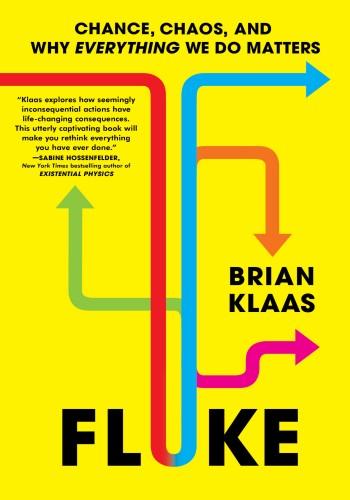
Fluke: Chance, Chaos, and Why Everything We Do Matters
by
Brian Klaas
Published 23 Jan 2024
“sight of my life”: F. Turner, “Earthrise: How Man First Saw the Earth,” Technology and Culture 51 (1) (2010): 272–74. “burned in the heavens about me”: Ezzy Pearson, “The Overview Effect and Apollo,” BBC: Sky at Night Magazine, 23 March 2023. overview effect: N. Kanas, “Spirituality, Humanism, and the Overview Effect during Manned Space Missions,” Acta Astronautica 166 (2020): 525–28. See also D. B. Yaden et al., “The Overview Effect: Awe and Self-Transcendent Experience in Space Flight,” Psychology of Consciousness: Theory, Research, and Practice 3 (1) (2016). control nothing, but influence everything: This is an adapted version of a quote often used by Professor Scott E.
…
In gazing out that tiny window, it occurred to him “that the molecules of my body and the molecules of the spacecraft itself were manufactured long ago in the furnace of one of the ancient stars that burned in the heavens about me.” This reckoning with oneness is so common and profound for those who see Earth from the outside that it has a name: the overview effect. We remain stuck with a limited field of view. Expand that view, as the astronauts did gazing out of their spacecrafts, and it immediately becomes clear that individualism is a mirage. Connection defines us. At first, an intertwined world seems terrifying. Nobody wants to be told they’re not in control, or that a stranger’s decision half a world away, or a long-forgotten decision decades in the past, could kill us or cause our economy to collapse into a crippling recession.
…
See also evolution nature, oneness with, 31, 33 nature–nurture dichotomy, 45 Nazism, 1, 162, 177 “negative capability,” 262 neural networks, 28, 159, 226, 231 neuroscience, 12, 67, 74, 133, 242 schemas and, 170 storytelling and, 137 Newton, Isaac, 16, 23, 33, 107, 254 laws of, 16, 22, 227 Principia (1687), 227 Nietzsche, Friedrich, 253 Obama, Barack, 120, 121 On the Banks of Plum Creek (Wilder), 82 On the Origin of Species (Darwin), 39, 176 Orent, Arika, 191 Orgel’s second rule, 257 Ortelius, Abraham, 173n Orthodox Judaism, 129 outliers, 104, 214 overview effect, astronauts and, 29 Page, Scott, 97 Pagel, Mark, 51 Paltrow, Gwyneth, 47, 223 pandemics, 12, 28, 87, 97, 101, 190 paradigm shift, 173 parasites, 35, 41 Pareto distribution, 43 Parfit, Derek, 36, 37, 159n Pascal, Blaise, 107 past-present-future relationship: assumption of past as guide for the future, 106–7 chain-link past, 8 determinism and, 222 Laplace’s demon and, 23–24 present moment tied to threads from the past, 21 time travel and, 6 path dependency, 90–91, 148–49 pattern detection, 70–71, 77 PAX6 gene, 15 peer review, 198, 201, 202 philosophy, 11, 32–33, 227 phrenology, 177 physics, 11, 12, 22–23, 30, 88, 237 comparison with social science, 211 determinism and, 222, 223 discarded theories in, 112 free will and, 232 Newtonian, 22, 23, 227 quantum physics, 72, 109–10, 228 roll of dice and, 42n Pillsbury, John S., 82n Pine Tree Riot (New Hampshire, 1772), 144–45 Pinker, Steven, 67 Pitt, Brad, 259 Pittman, Colonel Samuel, 168 Planck, Max, 109 Poincaré, Henri, 263 Poisson distribution, 73 political parties, 92 political science, 11, 88, 148, 196 Popova, Maria, 247 Popper, Karl, 172 pratītyasamutpāda (“dependent origination”), 226 precognition, 201 presidential election (2016), 116, 167, 208–9 presidential election (2020), 156, 157 primates, life in trees and, 145–46 Princip, Gavrilo, 99 Principia (Newton, 1687), 227 probabilities, 37, 106, 114, 165, 228 belief-type, 117 frequency-type, 117 Hume’s definition of, 108 stationary and nonstationary, 120, 125 theory of, 107 weather forecasting and, 115–16 “prosperity theology,” 34 Protestantism, 33–34 Protestant Reformation, 92 “Protestant work ethic,” 34, 153 psychology, 12, 199, 242 publication bias, 202 punditry, 75 Putin, Vladimir, 101 P values, hacking of, 199–201, 203 quantum mechanics, 111, 211, 220, 237 Bohmian mechanics, 229 Copenhagen interpretation, 228 Quetelet, Adolphe, 108 racism, 150, 151, 242 Radical Uncertainty (Kay and King), 118 Randall, Lisa, 14 randomness, 5, 13, 45, 70, 88 exploration of the unknown and, 261 of genetic mutations and variations, 48–49 ignored in evolutionary change, 57 misfortune and, 44 neutral molecular theory and, 61 quantum mechanics and, 228 storytelling and, 137 unsatisfying to narratives, 73 Randomness in Evolution (Bonner), 58n Rarámuri people, 33 rational-choice theory, 16, 131–33, 165 reality: complexity of, 30 as interconnectedness, 27 limitations of sense perception and, 67–69 “manifest image” of, 66 narrative arc missing from, 140 relational nature of, 37 storybook version of, 7, 13, 131, 160–61, 196, 199, 247 red heifer, messianism and, 129–31 reductionism, 35 regularity, 20, 86–87, 91, 103 relational view, 32, 33, 37 religion, 11, 74, 134 basins of attraction and, 92 unity with natural world and, 33 replication crisis, 198–99, 200 retroviruses, 40 Rift Valley (East Africa), 146–47 ripple effects, 159, 177, 244, 255, 264 risk, 106, 113, 196 Ritchie, Stuart, 198 Roman and Greek numerals, 107 Romer, Paul, 213 Rosa, Hartmut, 249 rounding errors, 25 Rovelli, Carlo, 185 Royal Navy, British, 144 Ruelle, David, 165 Rumsfeld, Donald, 123 Russell, Jack, 192 Sally, David, 210 sandpiles, 97, 98, 101 Saudi Arabia, discovery of oil reserves in, 149–50 schemas, 169, 170 Schrödinger’s equation, 111, 228 science, 34, 108, 109 philosophy of science, 172–73 scientific revolution, 22 strong-link problems and, 209–11 sea turtles, light used as shortcut by, 78 second order desires, 236–37 Secret, The (Byrne), 250, 251 self-help books, 19–20, 31, 249, 251, 255 self-organized criticality, 96, 97 September 11, 2001, terrorist attacks, 54, 134, 135, 182–83, 184, 190, 208 Shaw, George Bernard, 10 Sheen, Martin, 235 Sheldrake, Merlin, 35 Shiller, Robert, 138, 139 shocks, 97, 104 Shortcut Creature, 65, 67, 68, 70, 78, 79 signaling, 169–70 signal-noise relationship, 27, 46, 204, 214 Silver, Nate, 105, 116, 120, 208–9 Simmel, Marianne, 71 Simpson, George Gaylord, 173, 174 simulations, 25, 43 Sliding Doors (film, 1998), 47, 57, 223 Smith, Adam, 16, 131, 164 soccer ball, tourist off Greek coast saved by, 20–21, 28, 57 social science, 11, 75, 112–13, 150, 195 easy and hard problems of social research, 197, 203, 205, 217 file drawer problem, 201, 202 Fragile Families Challenge, 216–17 Holy Grail of Causality, 216 misuse of mathematics in, 213–14 P-hacking and, 199–201, 203 replication crisis, 198–99, 200 sociology, 49, 88, 108, 196, 199 space-time, 143 spiritualism, 171 split-brain experiments, 74 stability, 13, 88, 95, 254 causes of World War I and, 98 comforting routine and, 13 dictatorships and, 206 global instability, 87 global stability, 85 illusion of, 92, 103 local instability, 85 local stability, 86 of political systems, 9 statistics, 108, 119 Stimson, Henry L., 1–3, 10, 17, 27, 127, 250, 255 stock market, 91, 103 Stokes, Pringle, 174–75, 178 Stone Age, 85, 86 Story Paradox, The (Gottschall), 140 strong-link problems, 210–11 structuration, 243 Structure of Scientific Revolutions, The (Kuhn, 1962), 172–73 supernatural powers, 22 superstition, 72–73, 75, 113, 258, 259 supply-and-demand curve, 89 supply-chain disruptions, 28 survivorship bias, 60 swarms, 82–84, 87, 96, 97, 102 synaptic pruning, 67 Szymborska, Wislawa, 254 Tackett, Jennifer, 200n Taleb, Nassim Nicholas, 28, 43, 93, 124 tectonic plates, movements of, 143, 146, 147, 155, 173–74 teleological bias, 75–76 Temple Mount (Jerusalem), 129–30 terrorism, 97 theology, 227 Thompson, D’Arcy, 42 Thompson, E.
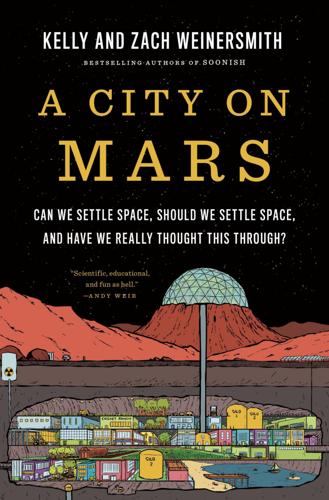
A City on Mars: Can We Settle Space, Should We Settle Space, and Have We Really Thought This Through?
by
Kelly Weinersmith
and
Zach Weinersmith
Published 6 Nov 2023
: Considering Lunar Governance in Historical Perspective.” Strategic Studies Quarterly 3 (2009): 82–103. http://www.jstor.org/stable/26268666. Moore, Kimberly C. Star Crossed: The Story of Astronaut Lisa Nowak. Gainesville, FL: University Press of Florida, 2020. Moran, Norah. “Ep 107: The Overview Effect.” NASA, August 29, 2019. http://www.nasa.gov/johnson/HWHAP/the-overview-effect. Morgan Stanley. “Space: Investing in the Final Frontier.” Morgan Stanley, July 24, 2020. https://www.morganstanley.com/ideas/investing-in-space. Morozov, Sergei. “Asgardia’s Calendar and Its Role in Space Industrialisation Strategy,” Room: The Space Journal of Asgardia, 2019. https://room.eu.com/article/asgardias-calendar-and-its-role-in-space-industrialisation-strategy.
…
There are long-standing societies dedicated to the idea, and over the years they have built up all sorts of arguments for why humans must go to space, must go soon, and how everything will be great when we get there. Depending on which theory you believe, space is supposed to: lessen the chance of war, improve politics, end scarcity, save us from climate change, reinvigorate a homogenized and rapidly wussifying Earth, and in one widely held notion called the “overview effect,” make us all as wise as philosophers. If any of these were true, they might defeat Deudney’s arguments. If we’re all going to be philosophers up there, why worry about war? Or if we have a shot at eliminating scarcity, maybe the existential gamble is worth the danger. The problem is that, for reasons that will be detailed in the rest of the book, these ideas are almost certainly wrong.
…
Some international conflicts may really be about the need to stand together and see each other as members of the same human family, but many are down to actual differences in values and goals. Those disputes can and should be solved by conventional politics. Weinersmith Verdict: Argument 7: Space Travel Will Make Us Wise There are different flavors of this argument, but the most famous is philosopher Frank White’s notion of the overview effect. White, and many other people in the space community, believe that the view of Earth from space confers special insights about nature and human oneness. As he says, “People who live in space will take for granted philosophical insights that have taken those on Earth thousands of years to formulate.”
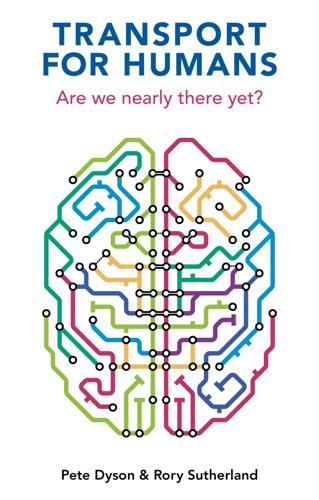
Transport for Humans: Are We Nearly There Yet?
by
Pete Dyson
and
Rory Sutherland
Published 15 Jan 2021
Such a view takes us far beyond nudging: it categorically rethinks the design, evaluation and purpose of travel as we know it. The next frontier and the final word: the overview effect Much can be learned from the next frontier in human transport: space travel. Astronauts are the only people to have observed humanity at a distance, and they report a transformative experience. They tell us that national borders melt away; that they see a fragile ball hanging in the void and observe the atmosphere as a paper-thin shield. Now receiving dedicated study, this phenomenon is known as the overview effect – the cognitive shift of consciousness, awe and a planetary perspective that endures for years after an astronaut has returned to Earth.9 * * * 6 See Alan Turing’s lecture to the London Mathematical Society on 20 February 1947 in A.
…
Yoshimura. 2014. Fine-tuned bee-flower coevolutionary state hidden within multiple pollination interactions. Scientific Reports 4, 3988. 8 Based on average UK vehicle emissions of 130 grammes per kilometre, which equals 1 kilogramme per 7.6 kilometres. 9 F. White. 2014. The Overview Effect: Space Exploration and Human Evolution, 3rd edn. Reston, VA: American Institute of Aeronautics and Astronautics. Figure 26. Earthrise: an image found to evoke a planetary shift perspective. Here is the Apollo 14 astronaut Edgar Mitchell’s description of his nine-day space-travel experience from 1971: We went to the Moon as technicians, we returned as humanitarians. … You develop an instant global consciousness, a people orientation, an intense dissatisfaction with the state of the world, and a compulsion to do something about it.
…
It is in the spirit of these intrepid travellers that we are inspired to test our assumptions, to apply human insights with creativity and rigour, to learn through collaboration, and to think more imaginatively about the uncertainties of the future. This is the blueprint for designing transport for humans. * * * 10 D. B. Yaden, J. Iwry, K. J. Slack, J. C. Eichstaedt, Y. Zhao, G. E. Vaillant and A. B. Newberg. 2016. The overview effect: awe and self-transcendent experience in space flight. Psychology of Consciousness: Theory, Research, and Practice 3(1), 1. About the authors Pete Dyson joined Ogilvy’s Behavioural Science Practice in 2013, and in 2020 he joined the UK Department for Transport as Principal Behavioural Scientist, tasked with the Covid-19 response, sustainable behaviour change and establishing a dedicated behavioural science team.
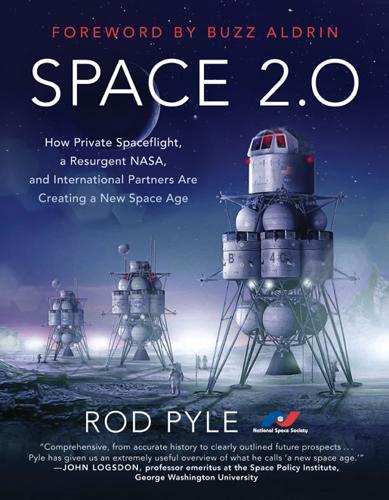
Space 2.0
by
Rod Pyle
Published 2 Jan 2019
This inspiration takes many forms. It is instructive to listen to what some of the people who have traveled to space have to say. Their viewpoints are unique—recall that just over five hundred people have made this trip, after all—and are often formed by seeing Earth from space, a vantage point referred to as the “overview effect.” This phenomenon was identified by Stanley Rosen in 1976 and written about extensively by American author Frank White in 1987.17 The resulting impulse prompts the astronauts to share their feelings about the fragility of the earth, the pettiness of human conflict, and the need to work cooperatively for the betterment of all humanity.
…
But they often do speak on the subject, especially later in life. Edgar Mitchell, who flew to the moon on the Apollo 14 mission, had this to say, thinking back on his perspective from 240,000 miles away from Earth in 1971: Earthrise from Apollo 8, the image that stirred a global consciousness and led to the identification of the “overview effect.” Image credit: NASA “You develop an instant global consciousness, a people orientation, an intense dissatisfaction with the state of the world, and a compulsion to do something about it. From out there on the moon, international politics look so petty. You want to grab a politician by the scruff of the neck and drag him a quarter of a million miles out and say, ‘Look at that, you son of a bitch.’”18 That’s eloquent, in a salty way.
…
Retrieved August 11, 2017. 14If you want more evidence, see the publication NASA Spinoffs, which has been in print (and is now online at spinoff.nasa.gov/Spinoff2008/tech_benefits.html) since the early days of the space program. 15Interview with the author, October 2016. 16Interview with the author, November 2016. 17Rosen, Stanley. “Mind in Space.” USAF Medial Service Digest, Jan–Feb 1976; White, Frank. The Overview Effect—Space Exploration and Human Evolution. Houghton-Mifflin, New York, 1987. 18People magazine interview with Ed Mitchell, April 8, 1974. 19Interview with the author, November 2016. 20Interview with the author, March 2017. 21Interview with the author, November 2016. 22Wolf, Nicky. “SpaceX Founder Elon Musk Plans to Get Humans to Mars in Six Years.”
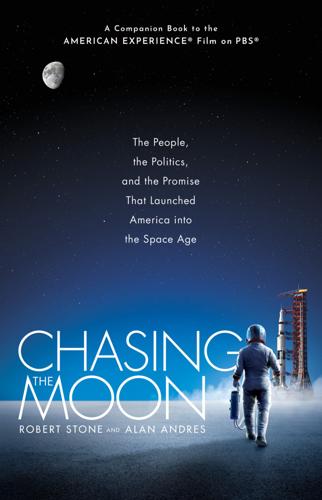
Chasing the Moon: The People, the Politics, and the Promise That Launched America Into the Space Age
by
Robert Stone
and
Alan Andres
Published 3 Jun 2019
Smith, “Pride in Identifying,” NYT (August 9, 1969). A reporter present noticed “L.A. State Dinner Enjoyed by Black Figures,” Jet (August 28, 1969), p. 8. Lawrence’s introduction Gladwin Hill, “Negro Among Four Chosen as Crew of Manned Orbiting Laboratory,” NYT (July 1, 1967). “The overview effect” Frank White, The Overview Effect: Space Exploration and Human Evolution (Boston: Houghton Mifflin, 1987). Poppy Northcutt, who served Northcutt, interview with the authors. A new era of exploration Julian Scheer, interview in One Small Step: Man on the Moon, BBC Two television documentary (June 28 and June 30, 1994); Julian Scheer, “The Sunday of the Space Age,” The Washington Post (December 8, 1972), p.
…
The photographs of our fragile home planet accelerated an emerging environmental consciousness that a few visionaries had foreseen during the post-war era. But those images, along with personal reflections of the astronauts who traveled to the Moon, contributed to a second political and philosophical consciousness, which was given the name “the overview effect.” Looking upon the Earth from a distance of nearly 240,000 miles and being able to obscure it from sight by raising a thumb prompted many of the astronauts to realize that the political, geographical, religious, and tribal differences that divided the peoples of the globe were glaringly trivial and dangerous for the future of the species.

The Art of Rest: How to Find Respite in the Modern Age
by
Claudia Hammond
Published 5 Dec 2019
It’s really very impactful to see the place where the entirety of human history has occurred below you, looking a lot like it does on maps and globes, but actually being real. There is a sense of the vastness of the Earth and the population of humanity compared to the seven of us on board at the time.’ The impact that this view can have on people is known as the ‘overview effect’. Annahita Nezami made the overview effect the topic of her PhD. Among the astronauts she spoke to, she detected a shift in their awareness. After seeing the Earth as a fragile ball in the void of space, nourished by a thin atmosphere, they developed an intense feeling of interconnection with other people, as well as the strong sense of a broader responsibility towards the planet.
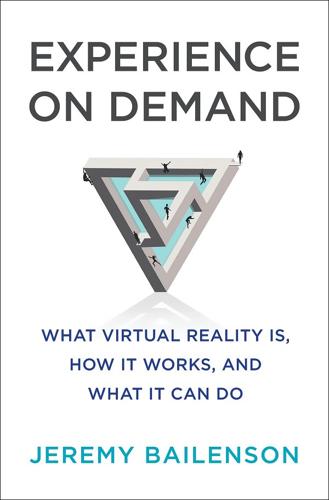
Experience on Demand: What Virtual Reality Is, How It Works, and What It Can Do
by
Jeremy Bailenson
Published 30 Jan 2018
You want to grab a politician by the scruff of the neck and drag him a quarter of a million miles out and say, ‘look at that you son of a bitch.’” Mitchell was not the first, or the last, astronaut to report a consciousness-altering experience after seeing the Earth from space. So many astronauts and pilots have been affected by this rare perspective that there is a name for the phenomenon—the “Overview Effect.” Astronauts like Chris Hadfield, Ron Garen, and Nicole Stott have all reported versions of the sensation, a sudden intense awareness of the fragility of the Earth that sinks in when one sees how thin the Earth’s atmosphere is, or first realizes that signs of human despoliation, like deforestation and erosion, are easily visible from orbit.
…
See also specific newspapers newsreels, 206 New York City Fire Department, 142–44 The New York Times, 31, 78, 204–5, 210–11, 221, 234 Ng, Andrew, 235–36 nickelodeons, 216 Nintendo 64, 157 nonverbal communication, 181–84, 189–201, 240–41, 244 Northwestern University, 123 Nosferatu, 215 ocean acidification, 126–30, 222–23, 235, 236 Oculus, 223 Oculus developer kits, 186 Oculus Rift, 7, 9, 12, 29, 247 Oculus VR, 7–8, 175, 180, 218–19 one-reelers, 216 opioids, 151–53, 155–56 optic flow, 254–55, 256, 257 orbitofrontal cortex, 55 ostracism, 94–95 “Overview Effect,” 109–10 pain, 150–64 distraction from, 153–60 VR therapy for, 169–73 Pain Management Center, 153 Palmer, Carson, 16, 17–18, 34, 35–36, 37, 39 Palmer, Edward, 230 paper consumption, environmental consequences of, 113–16 Patterson, David, 155–58 PBS Frontline, 204 Pea, Roy, 123, 126, 128–29 perception, 207 Perone, Brian, 235, 236–37 perspective-taking, 82–83, 93–95, 101 Petra Great Temple site, 246 phantom limb pain, VR therapy for, 161 Philips Corporation, 189–93 photographs, 205–6 photojournalism, 205–6, 211.

Supremacy: AI, ChatGPT, and the Race That Will Change the World
by
Parmy Olson
He also paid $10,000 to get on the waiting list for Nectome, a Y Combinator start-up that preserved human brains through a high-tech embalming process, so that they could be uploaded to the cloud and then turned into a computer simulation by scientists in the future. As he invested in more companies pioneering the distant future, Altman seemed to be experiencing what’s known as the overview effect, a cognitive shift that astronauts get when they view Earth from space and get an overwhelming sense of awe and self-transcendence. He was increasingly seeing the world as if he was in outer space. Conversations with Altman were marked by deep, searching stares and contemplative pauses, as if he were an observer rather than an engaged participant.
…
See also Facebook Metz, Cade Microsoft Azure Bing ChatGPT and cloud computing and Copilot corporate bloat and facial recognition and Gebru and GitHub Copilot and Inflection and market capitalization of Microsoft Research Nadella and OpenAI and as partner for OpenAI Tay chatbot Visual Studio Microsoft Research Asia Millar, George Minecraft Mitchell, Margaret at Google concerns about bias paper with Bender and Molyneux, Peter Moskovitz, Dustin Mozilla Foundation Murati, Mira Musk, Elon AI Safety Summit and bad-mouthing of Hassabis and call for AI pause and DeepMind and effective altruism and fears about AI and Hassabis and ideological focus of interplanetary colonization and as member of PayPal Mafia and Neuralink and offer to acquire DeepMind of OpenAI and Page and PayPal and Twitter and Myanmar Nadella, Satya NASA Nectome Neeva Nest Netflix network effects Neuralink neural networks NeurIPS “Neuroscience-Informed Deep Learning” (Ng) Newsweek New Yorker New York Times NFL Ng, Andrew, at Google Nokia Nvidia Obama, Barack OpenAI AGI and AI Act and Altman’s removal from Amodei and bias in ChatGPT and capped-profit structure and ChatGPT and ChatGPT Plus Codex competition with DeepMind and computing power and DALL-E 2 effective altruism and funding and GPT-1 GPT-2 GPT-3 GPT-3.5 GPT-4 GPT-5 GPT Store and hallucination in ChatGPT and ideas behind internal concerns about ChatGPT large language models LessWrong community and Microsoft and Musk and principles and recruiting and Reddit and revenue of scale and Superalignment Team transformers and transparency issues and Open Philanthropy Oppenheimer, Robert Ord, Toby overview effect Page, Larry background of change in leadership at Google and ChatGPT response and China and DeepMind ethics and safety board and Future of Life Institute conference Go and Google acquisition of DeepMind and leadership of DeepMind and Musk and Ng and PageRank algorithm Pantic, Maja Parfit, Derek PayPal PayPal Mafia Penrose, Roger Piantadosi, Steven Pichai, Sundar AlphaGo and as CEO of Alphabet DeepMind and Google DeepMind and on Google employees starting businesses hopes for DeepMind research and on LaMDA leadership at Google and Pitchbook policing Politico Polosukhin, Illia Populous privacy, Loopt and Ptacek, Thomas H.

Through the Glass Ceiling to the Stars: The Story of the First American Woman to Command a Space Mission
by
Eileen M. Collins
and
Jonathan H. Ward
Published 13 Sep 2021
The sun set over Australia. Darkness again, over the vast uninhabited stretches of the South Pacific. It was perhaps the most profoundly remarkable fifty minutes of my life as an astronaut. What a beautiful planet. How important for all of us to take care of it! This was an example of the “overview effect” that you often hear astronauts describe. When separated from Earth, you become even more attuned to Earth. Your love for your home planet grows, and you’re filled with a desire to take care of this wonderful place. When you look the other direction and see the absolute blackness of space, you realize there are no other planets we could ever hope to reach that are even remotely like ours.
…
launch pad, 1, 141 orbiter processing, 140–141, 156, 169, 181, 234 runway (Shuttle Landing Facility), 4, 158, 174–175, 201–203, 218, 236, 243, 274–275 teamwork, 144 tests, 156, 157, 184, 214 tours, 233 See also Astronaut Crew Quarters, Operations and Checkout Building, quarantine kid pic, 268 KingAir, 113 Kirk, John, 111–112 Kirk, Katie, 277 knowledge, 284 Kondakova, Elena, 167, 182–183, 185, 191–192 Korolev mission control (TsUP), 155 Kostelnik, Mike, 97 Kregel, Kevin, 113 Krikalev, Sergei, 154, 270–271 Kromer, Charles, 13 Kunchew, Janet, 82 Kuwait, 138 Kwajalein island, 76 Lackland Air Force Base, 34 land survival training program, 52–54, 138 Langley AFB, 64 Langley Research Center, 259 languages, 181–182, 184 Russian, 184–187 Lanni, Joe, 277 Launch Control Center, 268 Lawrence, Wendy, 259, 271–273, 276–277 Lazutkin, Alexandr (Sasha), 191, 194, 196 leadership, 29, 114–116, 148, 229, 245, 283 cockpit resource management (CRM), 84 commander, 84 communication, 250–252 creativity, 254–255 and cultural problems, 250 humility, 254–255 integrity, 250–151 know your job, 250 know your people, 250–251 listening, 254–255 and motivation, 214–215 and pleasers, 250 practices implemented at NASA, 239, 250, 252, 254–255 principles, 250 as symbol, 256 and women, 78, 98 League City, Texas, 246 LearJet-24, 107 Lee, Mark, 142, 146 Leinbach, Mike, 269 Lenin, Vladimir, 154 library, 13 lifting body approach and landing, 109 lightning and launch, 222 Lindbergh, Charles, 13 Linenger, Jerry, 168, 181, 183, 191, 193, 199–200, 203 Linenger, Kathryn, 191 Linnehan, Rick, 146, 218–219, 222 listening skills, 254–255 Lounge, Mike, 121 Love, Nancy, 13 low L/D flight, 109–110 Lu, Ed, 182–183, 240, 244 Lubbock, Texas, 27 Lucid, Shannon, 38 Lufkin, Texas, 246 Lythgoe, Mike, 28 MacArthur, Douglas, 285 major weapons system, 73 Malenchenko, Yuri, 240 maneuvers aerobatic, 49 cloverleaf, 61 level accelerations, 104 over the top, 61 Rendezvous Pitch Maneuver (RPM), 263 tower fly-bys, 104 marriage, 19 NASA rules for astronaut couples, 143 marriage and military career, 90–92 flying together, 91 needs of military come first, 91 Marshall Space Flight Center, 262 master’s degree, 88, 95 maternity leave, 180, 239 mathematics as mindset, 89–90 Max-Q, 225 McArthur, Bill, 138 McCool, Willie, 254 McHale, Bob, 48 MECO (main engine cutoff), 5, 142, 225 medical emergency in space, 156 medical exams, 32, 35–36, 123, 203, 234 Mellett, Kevin, 240 Melroy, Pam, 179 Mely’s Mexican restaurant, 246 memorization, importance of, 41–42, 62, 149 Mercury (Project), 12, 145, 158, 231, 256 Mercury 13, 158, 207 Miami, Florida, 62 Michoud Assembly Facility, 262 Midway island, 76 military as family, 39 relationship with local civilians, 70 as source of structure, 19 Minuteman missiles, 76 Mir, 150, 153–156, 160, 162, 164, 179–204, 208, 271 American astronauts on, 182–183 American to visit three times, 191 appearance, 166 approach, 166 cooling system, 193 depressurization, 194 difference from Atlantis, 191 dinner, 191–193, 195 docking with, 181, 190, 194 Elektron oxygen generator, 193 fellowship with, 166 fire, 191, 193, 200 Kvant-1, 193 photographic survey of, 195 Priroda, 190 radar, 166 R-bar approach, 190 rendezvous with, 154–155, 164–167, 190 safety, 200 and solar radiation, 195 Soyuz, 193 spacewalk, 200 Spektr, 190, 194 Structural Dynamic Experiment (MiSDE), 195 temperature, 191 training differences, 192 training for, 184–186 transfer of equipment, parts, supplies, 194 undocking, 197 and vibrations, 195 visiting, 190–193 water, 194 See also space station miscarriage, 236 Missile Run, 76 mission achieving success, 171, 208, 228–229, 279 defining for an organization, 104 for this book, 283 having a clear, 285 responsibility for, 255 return-to-flight (RTF), 258 mission assignment, 146 requesting, 205 Mission Control, 128, 145, 165–166, 170, 173, 201, 224, 226, 228, 230, 242, 270 Mission Management Team, 222, 273 mission specialist, 38, 120, 126, 128, 146, 149, 169, 173, 208, 212, 240, 259 mistakes, 22, 66, 68, 125, 241, 254 dealing with, 285 Mohri, Mamoru, 142–143 Mom, call sign, 139, 190 Moon, 128, 153, 197, 231 Morin, Mary Kay, 206 Moscow, Russia, 153–154 motherhood, 234 missing childhood milestones, 186 multitasking, 149 Murphy, Rich, 41 Musgrave, Story, 146, 157–158, 229 Nacogdoches, Texas, 248 Nagel, Steve, 140 nanny, 186–187 NASA, 84–87, 116, 119–130, 133 alcohol rules, 192 astronaut acceptance, 127–130 astronaut applications, 83, 117–118 Astronaut Office, 133, 140, 146, 205 astronaut selection board, 118 commander requirements, 205 culture, 179, 249–255 flawed thinking, 252 Flight Crew Operations Branch, 124, 209 and gender, 179 Group 13, 131 Headquarters, 177, 235, 247 history, 137 organization and culture, issues with, 249–255 overconfidence, 253 Public Affairs, 153, 206, 209–210, 236 reputation, 131–132 Security, 177–178 software models, flawed, 253 Space Shuttle Program Office, 256 Test Director, 144 National Centre for Space Studies (CNES), 208 National Soaring Museum, 14 National Transportation Safety Board, 84 Navias, Rob, 153 Navy, 8 Test Pilot School, 113 women pilots, 24 Near-Mir, 154 negotiation, 154–155 Nervi Auditorium, 203 Neutral Buoyancy Lab, 259 New Orleans, Louisiana, 262 New York Stock Exchange, 236 Nicklaus, Jack, 180 Nobel Prize, 213 Noguchi, Soichi, 240, 247–248, 259, 268, 271–273, 276 Noriega, Carlos, 182–184 normalization of deviance, 253 Norton AFB, 74 Notre Dame High School, 15–16, 280 Ochoa, Ellen, 132–133, 138 Offutt Air Force Base, 32 O’Hara, Rose Marie (mother), 7, 9–11, 13, 16–18, 122, 129, 158, 177, 243, 265, 279 O’Keefe, Sean, 245 Okinawa, Japan, 76 Oklahoma, 69–70 Operation Desert Shield, 138 Operation Desert Storm, 138 Operations and Checkout Building, 203, 218, 220, 223, 268 orbital maneuvering system (OMS), 226 Orbiter Systems, 139–140 organizational culture defined, 252 See also NASA, organization and culture, issues with O’Rourke, Jim, 28 overview effect, 199 P-3 Orion, 107 Palmdale, California, 214 panic, 108, 137, 207, 216 parachutes, 1, 27, 40, 45, 47, 61, 161, 221 training, 38, 40, 138 parasailing, 40 Paris, France, 111 Parker, Jackie, 94 passion, 13, 23, 28, 33, 89, 91, 129, 285 Pat and Eileen, 99 patience, 50, 239 patriotism, 28, 286 Patuxent River, Maryland, 113 payload specialists, 146 Penta Hotel, 154 Pepsi, 169 Pe-Te’s Cajun BBQ, 121 Pettit, Don, 240 Phenergan, 164 Philippines, 76 Phillips, John, 270–271 photography, 187, 233 damage inspection, 251, 255, 263, 267, 270, 272 from orbit, 195–198, 201, 234 physiology, 39 Pierce, Lisa, 38 pilot abilities and skills needed, 35 dream of becoming, 38 first woman space shuttle pilot, 149–178, 281 instructor pilots (IPs), 41, 43, 50 lack of female pilots, 179 mindset, 42–43 pregnant pilots, rules for, 178 success keys, 42–43 women, 6, 36–37 women, first, 6 PILOT, 275 Pilot Instructor Training (PIT), 59–61 Pollock, Elton T.
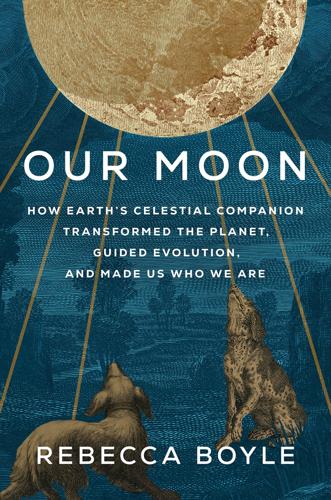
Our Moon: How Earth's Celestial Companion Transformed the Planet, Guided Evolution, and Made Us Who We Are
by
Rebecca Boyle
Published 16 Jan 2024
By the early 2020s, only about 550 human beings had slipped the surly bonds of Earth and floated above it far enough to see its curvature, to see the eggshell-thin line of our life-giving atmosphere. Many report feeling an overwhelming sense of clarity and unity, a heart-swelling state of heightened awareness and togetherness that is common enough to have its own name: the “overview effect.” The term comes from aviation, and if you’ve ever flown in a plane you might have experienced a version of it. The sense of boundaries evaporating, of your own puniness when arrayed against the broader world, the unnerving shift in perspective as cars turn into microdots and metropolises melt until you notice only land and water.
…
The sense of boundaries evaporating, of your own puniness when arrayed against the broader world, the unnerving shift in perspective as cars turn into microdots and metropolises melt until you notice only land and water. You realize we are all hanging onto the same rock, the only place any of us can turn in deadly turbulent waters. You realize it’s worth protecting. You realize its inhabitants are worth protecting. This is how Edgar Mitchell, the sixth man to walk on the Moon, described the overview effect in 1974, in an interview with People magazine: You develop an instant global consciousness, a people orientation, an intense dissatisfaction with the state of the world, and a compulsion to do something about it. From out there on the Moon, international politics look so petty. You want to grab a politician by the scruff of the neck and drag him a quarter of a million miles out and say, “Look at that, you son of a bitch.”20 A visitor to space does not need to be pious to feel this epiphany.
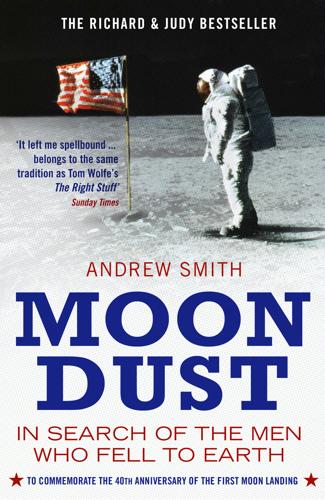
Moondust: In Search of the Men Who Fell to Earth
by
Andrew Smith
Published 3 Apr 2006
When Rusty Schweickart saw him speak for the first time and gasped, “I didn’t know Gene had that in him,” he took his colleague’s apparent passion as an affirmation of his own profound feelings about floating in space, but there are other ways to read this. A second writer describes him as “frighteningly articulate” and warns me not to be late for our meeting. What intrigues me in relation to Cernan is this: In a book from the 1980s called The Overview Effect, a Princeton social scientist named Frank White examines the impact upon the imagination of seeing the Earth from space. It’s an interesting if misty-eyed tract, but one thing which caught my eye was White’s acknowledgment of the natural, human pressure that astronauts must feel to give us what we want and expect; for their own experience to be corrupted over time by our innocent longings.
…
London: Penguin, 1995. Verne, Jules. From the Earth to the Moon . Stroud, England: Alan Sutton Publishing Limited, 1995. Vidal, Gore. The Last Empire: Essays 1992–2001 . London: Abacus, 2002. Wendt, Guenter, & Russell Still. The Unbroken Chain . Burlington: Apogee Books, 2001. White, Frank. The Overview Effect: Space Exploration and Human Evolution . Boston: Houghton Mifflin Co., 1987. Wolfe, Tom. The Right Stuff . London: Picador, 1990. Worden, Alfred M. Hello Earth: Greetings from Endeavour . Los Angeles: Nash Publishing Corp., 1974. Young, Hugo, Bryan Silcock & Peter Dunn. Journey to Tranquillity: The History of Man’s Assault on the Moon .
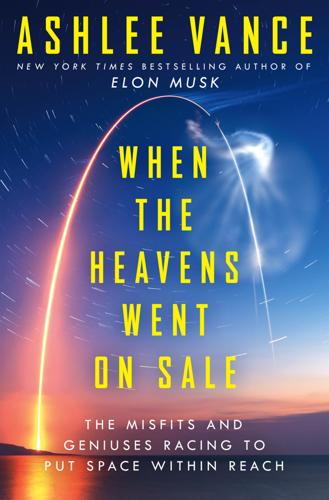
When the Heavens Went on Sale: The Misfits and Geniuses Racing to Put Space Within Reach
by
Ashlee Vance
Published 8 May 2023
I was so amazed that you could see individual trees. The fact that it worked just as we had planned was shocking to me. Robbie still carries the picture on his phone.” As Planet gathered more images over the course of several months, its employees began to be struck by what astronauts describe as the “overview effect.” This is the experience of seeing the earth from above and gaining a new insight about the fragility of this relatively small object hanging out in the void with the thinnest of atmospheres keeping it viable for human existence. The Planet engineers watched forests change colors through the seasons.
…
“Pete” Clementine mission and, 47 criticism of, 43–44 Firefly and, 476 lunar landers and, 56 Markusic and, 413–415, 417 OpenStack and, 251–253 robotics program of, 53–54 Rocket Lab and, 231, 234 SpaceX and, 435 Vandenberg Air Force Base and, 462 National Geospatial-Intelligence Agency, 475 National Museum of Nuclear Science & History, 244 National Photographic Interpretation Center, 117 National Reconnaissance Office (NRO), 45 Naval Postgraduate School, 324 Nebula, 251–253, 294 Neutron, 395, 490 New York Times, 445 Nimitz Air Field, 314–317 9/11 terrorist attacks, 35, 48 noosphere, concept of, 451 Noosphere Ventures Partners, 402, 451 North Korea, 119, 443, 445 Northrop Grumman, 445, 493n Norton Sales, 173, 175 NPIC: Seeing the Secrets and Growing the Leaders (O’Connor), 117n Number 8 wire mentality, 158–159, 166 Obama, Barack, 67, 222 Oban scotch, 448 Oberth, Hermann, 145 O’Connor, Jack, 117n O’Donnell, Shaun, 182–183, 190, 191, 192, 196, 202–203 Odyssey, 443n Office of Naval Research, 196 Office of Strategic Influence, 35–36, 48–49 oil supply, global, 122 Omelek Island, 3–4, 6–11, 415 Onenui Station, 216–218, 240 OneWeb, 128–129, 396, 397 Open Lunar Foundation, 488–489 OpenShop, 271 open-source intelligence community, 112–113, 114, 123 OpenStack, 250–253, 276 Operationally Responsive Space Office, 196 Oracle, 253 Orbital Insight, 122, 125–126 Orbital Sciences Corporation, 445 overview effect, 104–105 Pacific Spaceport Complex, 303, 320–323, 325, 330, 335, 338, 377 Page, Larry, 55, 63, 65, 77, 104n Pakistan, 123–124 Parkin, Kevin, 72–73, 78, 80, 83–84, 489–490 patterns of life, 120 Pearl Harbor, 115 Penrose, Roger, 85–86 Perot, Ross, 60–61 PhoneSat project, 89–96, 97, 102 Planet Labs as change agent, 132–133 China’s nuclear arsenal expansion and, 113–115 Doves (satellites) and, 396 factory of, 108–109 first satellite project of, 101–106 founding of, 100–101 goals of, 286n going public, 488 ground stations of, 107–108 headquarters of, 397 image quality and, 110–111 influence of, 19–20 Kemp and, 254 launch for, 29–32 LeoLabs and, 482 mapping projects and, 121 Milner and, 457n number of satellites and, 127 problem solving at, 105–107 Rocket Lab and, 227, 366 Russian invasion of Ukraine and, 487 satellite photography project of, 25–27 SPACs and, 389 uses of images from, 112–127 plasma physics, 412–414 Polar Satellite Launch Vehicle (PSLV), 25, 27 Polyakov, Max acquisition of Firefly by, 433–435 Anisimov and, 432 background of, 436–438 business ventures of, 447 in Dnipro, 439–440, 447 Dnipro university and, 450 Firefly facilities and, 448–450, 455–456 funding and, 455, 464–465, 470–471 goals of, 403–404, 448–449, 452 increase rocket size and, 455 Markusic and, 405–408, 457–460, 467–468, 478 meeting with, 402–403 in Menlo Park, 453–454 ouster of, 472–479 Russian invasion of Ukraine and, 486–487 shady business dealings of, 469–470 in Texas, 401–402, 466–467 US complaints against, 484–485 US government agreement and, 457, 470 at Vandenberg, 461–464, 473 Polyakov, Valeriy, 436–438 Polyakova, Katya, 454 Polyakova, Ludmila, 437–438 press fits, 151–152 propellants liquid, 196–197 mathematics of, 283–284 solid, 196 PSLV (Polar Satellite Launch Vehicle), 25, 27 Putin, Vladimir, 446, 457, 485 radar stations, 481–483 Raghu, Nikhil, 183–186, 188, 189, 192–193, 201–202 rain forest monitoring, 121 Rainbow Mansion, 71–80, 85, 100, 101 Raptor, 420 RD-180 engine, 449 RD-250s, 445 reaction wheels, 109–110 Reagan, Ronald, 43, 45, 47n regulatory efforts, 129 responsive space, 37, 250 Richardson, Bill, 147–148 Rocket, Mark (Mark Stevens), 179–181, 183, 185, 187, 188, 189, 197–199 Rocket 1, 316–318, 335–336, 337 Rocket 3, 369, 374–377, 378, 395 Rocket Lab Astra and, 296, 337–338, 349–350, 365 carbon fiber and, 426n early days of, 183–186 Electron rocket, 395 expansion of, 210–211, 214 financial issues and, 185–186, 198 Firefly and, 428 first launch and, 226–227 first mission for, 186–193 founding of, 177, 179–182 funding and, 203–204, 205–207, 209, 214, 224, 229 goals of, 141–143 going public, 490 headquarters for, 229–230 hiring process for, 212–213 innovative approach of, 143–146 Instant Eyes project and, 195–196, 199–201 Kemp and, 254, 331–332, 388 lack of attention to, 194–195 launch location for, 215–220, 397 launch vehicles of, 395 Los Angeles office of, 208 Markusic and, 424 military and, 195–197, 198–199, 202–203 Planet Labs and, 107 regulatory efforts and, 220–223, 456 salary discrepancies and, 235 schedule and, 224 SpaceX and, 242–243 SPACs and, 389 start of, 139–140 success and, 365, 369, 491 success of, 16–17 third launch and, 238–241 US offices of, 231–235 visit to, 137 work processes of, 232–233 Rocket Propulsion Elements (Sutton and Biblarz), 162 rocket start-ups, 16–17 Rumsfeld, Donald, 35–36, 275 Russian invasion of Ukraine, 485–488 Rutherford, Ernest, 140 Rutherford engines, 140–141, 209, 231–232 Safyan, Mike, 101, 107 Salvo rockets, 250 satellites.

The Milky Way: An Autobiography of Our Galaxy
by
Moiya McTier
Published 14 Aug 2022
Astronauts feel this same shift in perspective when they view Earth from orbit, because when you’re in space, you can’t see the imaginary borders that divide us. You see how fragile the complex, interconnected ecosystem we call home really is, and our petty human squabbles seem small and unnecessary. Philosopher Frank White called this life-changing cognitive shift the overview effect, and I’ve always thought Earth would be a much nicer place for all of us to live if we each got to experience just a little bit of it. Realistically, we won’t all get there by visiting space. Some people get to this same point through faith or meditation or drugs. I got there through science, by spending an inordinate amount of time picturing Earth, our solar system, and the Milky Way as their own small parts of the grander whole.
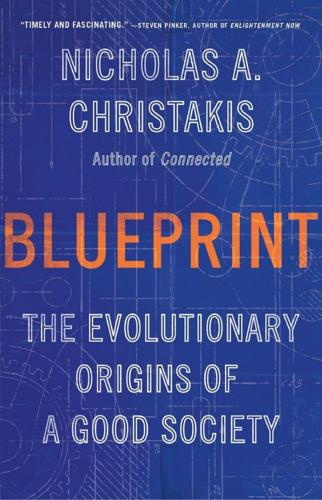
Blueprint: The Evolutionary Origins of a Good Society
by
Nicholas A. Christakis
Published 26 Mar 2019
Luo, “13-Month-Olds’ Understanding of Social Interactions,” Psychological Science 26 (2015): 274–283. 10. F. Warneken and M. Tomasello, “Altruistic Helping in Human Infants and Young Chimpanzees,” Science 311 (2006): 1301–1303. 11. For an expansive treatment of this phenomenon, which Frank White has called “the overview effect,” see F. White, The Overview Effect: Space Exploration and Human Evolution, 3rd ed. (Reston, VA: American Institute of Aeronautics and Astronautics, 2014). The quotes from Aleksandrov and Williams are widely attributed online, but I could not find the original sources. Two similar quotes, with sources, include the following: “You develop an instant global consciousness, a people orientation, an intense dissatisfaction with the state of the world, a compulsion to do something about it.
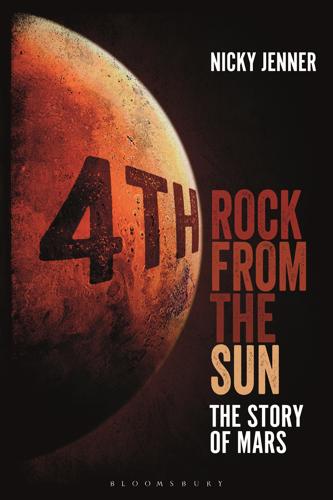
4th Rock From the Sun: The Story of Mars
by
Nicky Jenner
Published 5 Apr 2017
Astronauts heading to the ISS often struggle with the lack of home comforts, physical affection, emotional intimacy, variety (in terms of company, food, routine and more) and even a form of separation anxiety caused by being away from Earth for so long. Many astronauts have experienced something known as the ‘overview effect’, where seeing Earth from space caused them to instantly realise how small and devastatingly fragile our planet really is. These problems would be amplified on a trip to Mars as any crew won’t be able to return home easily (if at all). The time delay between Earth and Mars – which ranges from 4 to 24 minutes depending on the orbital positions of the two planets – also means that a crew would have the added stress and pressure of needing to be largely autonomous, especially in emergency situations, and rules out the possibility of smooth communication with Earth, making it difficult to track developing issues or to conduct therapy sessions.

The Hidden Globe: How Wealth Hacks the World
by
Atossa Araxia Abrahamian
Published 7 Oct 2024
In fact, the law indicates the country’s willingness to serve as a sort of flag of convenience for spacecraft, allowing them to play by one country’s idea of the rules in the absence of universal, binding agreements. Rick Tumlinson, a venture capitalist who invests in NewSpace companies and hosts a space-themed radio show, told me he liked Luxembourg’s law because it saw no citizens and no borders: just one blue planet from high above. He was invoking what’s known as the overview effect—the feeling of wholeness and transcendence that astronauts have reported at their first glimpse of Earth. By this logic, Luxembourg wasn’t making dispensations for the most privileged citizens. It was leveling the playing field—in space. * * * • • • Six weeks after I reported on the grand duchy’s trade mission to Washington, I boarded a flight from Geneva to Luxembourg City.
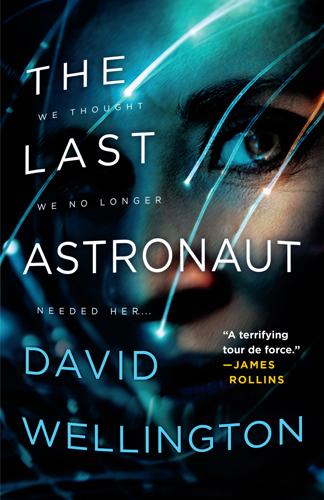
The Last Astronaut
by
David Wellington
Published 22 Jul 2019
Flown a lot of missions.” She shrugged. Was he going to ask her how many times she’d screwed up? How many missions she’d ruined? It was a question she’d been asked many, many times. It turned out that wasn’t where he was going, though. He shifted a little, scooting toward her. “I’ve heard about the overview effect. Right? The way astronauts feel like seeing Earth from space changes them. It makes them feel—” “Like none of it matters,” Jansen said. She nodded. “None of the human nonsense we waste so much time worrying about. From up there you look down and you can’t see any national borders. You can’t see why we have to fight wars.”
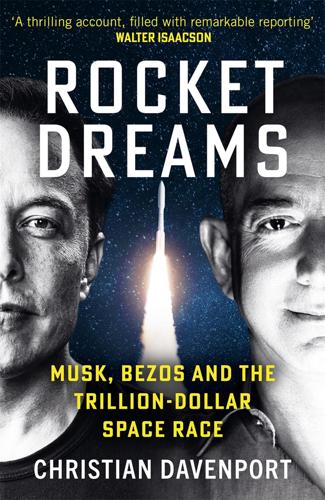
Rocket Dreams: Musk, Bezos and the Trillion-Dollar Space Race
by
Christian Davenport
Published 6 Sep 2025
Bezos’s and Branson’s flights were mocked as inconsequential joy-rides by billionaire “space cowboys” who had nothing better to do with their money, reducing to folly what was supposed to be a transcendent experience. Ever since humans began traveling into space, they have come back swooning, proclaiming that nothing can prepare a person for the view. The rapture of seeing Earth from above even has a name— “the overview effect”—an experience that has turned astronauts into evangelists, preaching the gospel of the cosmos. “Orbiting Earth in the spaceship, I saw how beautiful our planet is,” Yuri Gagarin said in 1961, as the Cold War space race was reaching a fever pitch. “People, let us preserve and increase this beauty, not destroy it.”
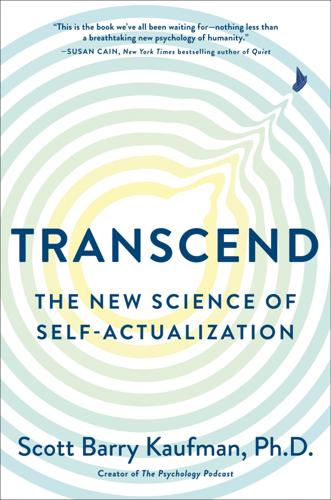
Transcend: The New Science of Self-Actualization
by
Scott Barry Kaufman
Published 6 Apr 2020
Psilocybin-occasioned mystical-type experience in combination with meditation and other spiritual practices produces enduring positive changes in psychological functioning and in trait measure of prosocial attitudes and behaviors. Journal of Psychopharmacology, 32(1), 49–69. 73. Shiota, Keltner, & Mossman, The nature of awe. 74. Harari, Y. N. (2017). Homo deus: A brief history of tomorrow. New York: HarperCollins. 75. Yaden, D. B., et al. (2016). The overview effect: Awe and self-transcendent experience in space flight. Psychology of Consciousness: Theory, Research, and Practice, 3(1), 1–11. 76. Harari, Homo deus. 77. The philosopher David Chalmers makes a similar argument. See: Kaufman, S. B. (2017). Philosopher David Chalmers thinks we might be living in a simulated reality.